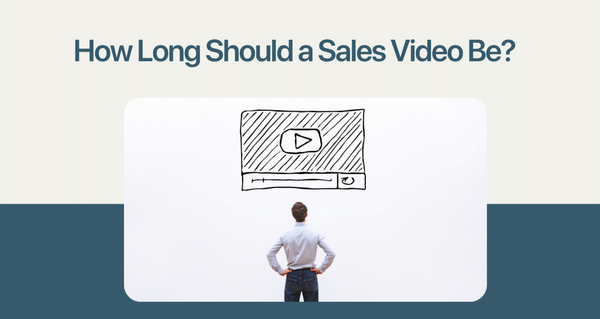In our always-on, data-driven world, hyper-personalization has become a key factor in differentiating successful businesses from the pack. But what is it, and how can you harness its power for your own company?
Simply put, hyper-personalization is the process of delivering highly individualized content and experiences to customers based on their specific needs and interests.
By considering all the data at your disposal – including customer demographics, browsing history, purchase history, and more – you can create a truly customized user experience that will keep customers coming back for more with CRM data.
Ready to get started? Keep reading to know the benefits of hyper-personalization.
9 Benefits of Hyper Personalization
The benefits of hyper-personalization are vast and far-reaching. Here are just a few examples of how this technology can be used to improve your life:
1. Customized Content
In a world where there are seemingly endless choices, hyper-personalization has become a selling point for many brands. By offering customized content, brands can appeal to consumers on a more personal level, leading to greater loyalty and satisfaction.

For example, Netflix has been a pioneer in hyper-personalization, using algorithms to suggest content that individual users are likely to enjoy. As a result, Netflix has built a loyal customer base that keeps coming back for more. In an increasingly competitive marketplace, hyper-personalization is one way for brands to stand out.
Imagine never having to filter through masses of content you’re not interested in again. You can receive only the most tailored and relevant information with hyper-personalization, laser-focused on your unique interests.
2. Higher Click-Through Rates, Conversion Rates, and ROI
By tailoring content and offers to the individual user, businesses can significantly increase click-through rates, conversion rates, and ROI. And there's no need to take our word for it - just look at the numbers.
A recent study found that 80% of consumers are more likely to buy from a retailer that offers personalized experiences. In contrast, another study by Accenture found that companies that personalize their websites saw an average uplift in sales.
With numbers like that, it's no wonder that more and more businesses are turning to hyper-personalization. So what are you waiting for? The time to get personal is now.
Also Read: Why Digital Banking Consumers Demand Hyper-Personalization
3. Help you Acquire New Customers and Grow your Business
Hyper-personalization has become increasingly popular in recent years to help businesses acquire new customers and grow their businesses. There are many different ways to personalize content, but one example is to use data from social media platforms to create targeted ads.
This might involve showing ads for products similar to those that the user has already shown interest in or ads tailored to the user's specific demographics.
Hyper-personalization can also be used to improve the customer experience on a website. For example, suppose a user has visited a site several times but has never made a purchase. In that case, the site might show them targeted offers or personalized recommendations to encourage them to make a purchase.
4. Content can be Delivered at Scale, Making it Cost-Effective
Delivering content relevant to the individual user has been shown to improve customer engagement and loyalty.
Hyper-personalization takes this one step further by using data to deliver highly targeted content at scale. This means that companies can reach many users with individually tailored messages, making the process both cost-effective and efficient.
Hyper-personalization has the potential to revolutionize the way businesses interact with their customers, creating more meaningful relationships that drive long-term loyalty.
5. Strengthens Customer Relationships
By leveraging data and artificial intelligence, businesses can deliver personalized content like personalized email and recommendations to individual users at scale. While hyper-personalization has traditionally been used for targeted advertising, it is increasingly strengthening customer relationships and driving conversions.
For example, Amazon has used hyper-personalization for years to deliver personalized product recommendations to its customers in different channels. As a result, Amazon has built a loyal customer base that returns repeatedly. With hyper-personalization, businesses can create similar bonds with their customers, leading to long-term relationships.
6. Shift the Focus from Static to Dynamic
Customers are more likely to engage with the content and feel a deeper connection to the brand. In addition, hyper-personalization can also help businesses better understand their customers and anticipate their needs.

Businesses can stay ahead of the curve and maintain a strong relationship with their customer base by shifting the focus from static segments to dynamic individuals.
7. Improved Efficiency
Having personalized content means that users don't have to wade through mountains of data that isn't relevant to them. This also extends to other areas, such as finding specific products or services faster, thanks to more precise search results.
Hyper-personalization can also target ads more effectively, leading to increased sales and conversions with the target customers. In a world where time is increasingly precious, hyper-personalization offers a much-needed respite from the deluge of generic information.
8. Greater Engagement
If the content is hyper-personalized, it will create a level of engagement that has never been possible before. Imagine, for example, being able to receive a relevant message from your favorite brand every time you open your phone.
Or imagine being able to walk into a store and have the associate instantly know your preferences and customize the experience just for you. This level of engagement would create loyalty and advocacy like never before.
And while it may seem like personalized experience is still a way off, there are already examples of brands beginning to implement this technology. So, while it may seem like science fiction today, hyper-personalization is likely to become the new normal in the years to come.
9. Help You Reduce Customer Churn
Reducing customer churn is a top priority for any business. After all, it costs far more to acquire a new customer than keep an existing one. However, retaining customers can be challenging, especially as competition increases and customers have more choices.
One way to combat customer churn is through hyper-personalization. This involves collecting data on customer behavior and using it to tailor the customer experience.

For example, a company might use hyper-personalization to send targeted promotions to customers based on their purchase history. This personalized approach can help build loyalty with better engagement and keep customers coming back.
The Bottom Line
And that’s why hyper-personalization can be so powerful. By understanding your customer deeper, you can create an experience that feels tailor-made just for them. And when it comes to online shopping or retail brands this kind of experience will keep the broad audience coming back for more.
Ready to see how hyper-personalization could benefit your business? Schedule a demo with our team today. We would love to show you firsthand how we can help you create a unique and delightful customer experience using the power of personalized marketing. Book a demo here!





